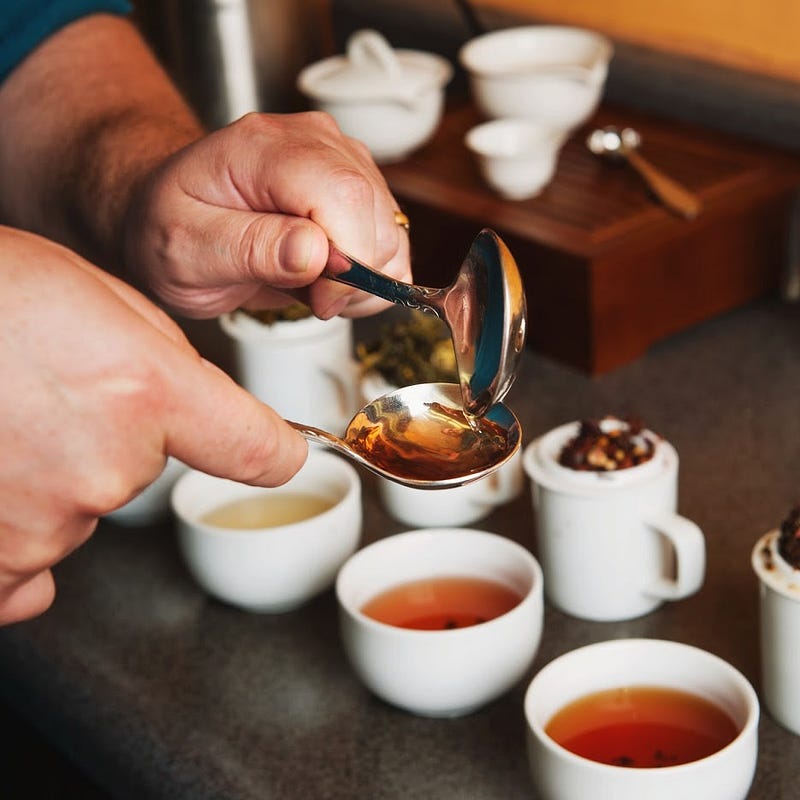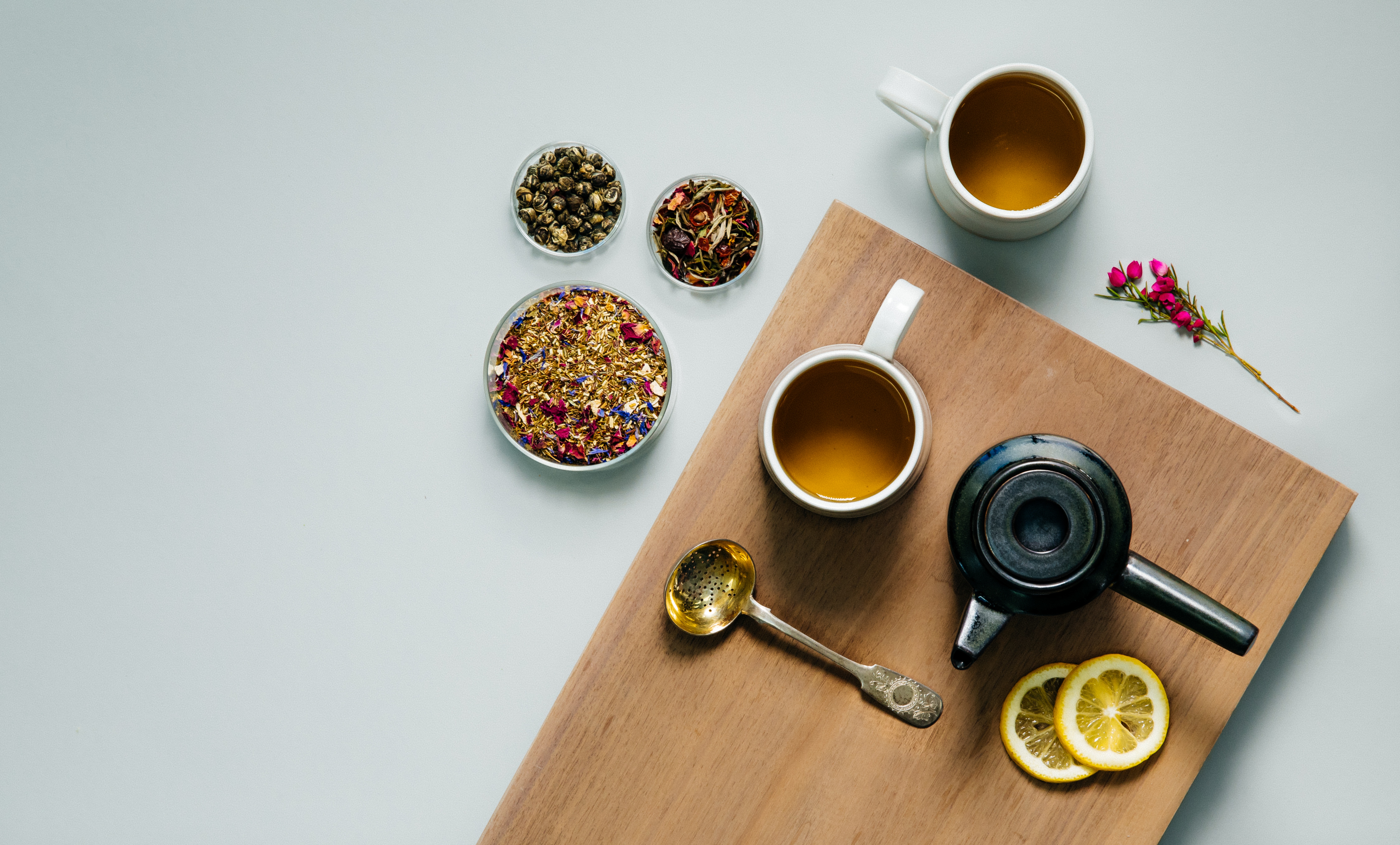Conducting tea tastings are a great way to interact with your customers and a great way for them to learn about the quality teas you sell from Art of Tea. Customers who conduct these tastings properly, constantly see a lift in tea sales. The theater of tea tasting will encourage others to join, thus, expanding your potential customer base.

Plan to Target all the Senses
Before we get into how to conduct a tea tasting, we want to point out that when conducting a tasting it is well worth your time to make the effort to key in all five senses: hearing, seeing, touching, smelling and tasting. This will not only make the experience more enjoyable and memorable, it will be more effective as well. People learn by doing and experiencing. By utilizing all of their senses, you are engaging them on a much deeper level and the tasting process will be much more effective.
Hearing: Conducting your tasting in a quiet environment, free from excessive noise, allows the other senses to be more acute. It is imperative that while the customer is tasting, we maintain that silence and wait to offer descriptions of what they should be tasting. Allow them to formulate their own thoughts and then educate them on the nuances of the cup.
Seeing: Always present the dry tea leaves on a white tray or plate. When tasting iced teas, show the brewed liquor first, without ice and then with ice in a clear cup, glass, or wine glass.
Touching: Encourage the customer to experience what the dry tea leaves feel like. When tasting hot teas show them the infused leaves as well.
Smelling: Have the customer smell the tea leaves throughout the process starting first with the dry leaves, then wet leaves and then liquor (both off and on ice, when appropriate).
Tasting: First have the customer taste the tea without any add-ons, like milk, sugar, honey, etc. Encourage them to slurp the tea in first using a spoon to activate all the taste buds simultaneously by showing them how it’s done. Then have them drink the tea normally by just taking a sip. Lastly, let them doctor up the tea the way they like to enjoy it.

Be Prepared
When planning to conduct a tasting it is important to be prepared with all the essentials. Make sure you have everything ready to go the day before and always plan on having extra. Tastings create theater and will naturally invite others to join in and take part. You don’t want to have an upset customer due to the lack of planning. As the old Benjamin Franklin saying goes, “He who fails to plan is planning to fail.”
Below you will find a list of items we recommend you have when conducting your tasting.
Hot Tea
- Art of Tea hot tea
- Key talking points
- Tea Pots
- White tasting cups
- White ramekins or plates for dry and infused tea leaves
- Timer
- Filtered water at the correct temperature
- Bus tray for used cups
- Customer surveys
- Tasting spoons
- Assorted Condiments (sugar, sugar substitutes, milk, honey, etc.)
- A vehicle for the customer to purchase the product if they desire
- Recommend menu pairings, if applicable
Iced Tea
- Art of Tea iced tea
- Key talking points
- Pitcher to hold the prepared iced tea (without ice)
- Ice bucket with scoop
- Ice made from filtered water
- White ramekins or plates for dry tea leaves
- Clear glasses or wine glasses
- Bus tray for used glasses
- Customer surveys
- Tasting spoons
- Assorted Condiments (sugar, sugar substitutes, etc.)
- A vehicle for the customer to purchase the product if they desire
- Recommend menu pairings, if applicable
Conducting the Tasting
Now that you understand how to incorporate the senses and you have all the essentials prepared, let’s engage your customers. Tea should be prepared as close to the tasting as possible. For hot tea this can actually be part of the tasting, but if time does not allow, it should be prepared no more than 10 minutes before the start of the tasting. Iced tea should be prepared no more than an hour before the start of the tasting in clean equipment that is properly calibrated and the brewed tea should never be stored in the refrigerator. Keep your prepared iced tea in a pitcher without ice, covered, at room temperature.
When interacting with your customers, be inviting and open to positive and negative feedback. Not every tea will entice everyone. That’s OK; it’s just not their cup of tea. Listen to their feedback as it will help you understand your customers better. Ask them probing, open-ended questions that will get them talking; or insure your survey does.
Hot Tea Pointers
- Make sure you are using the right amount of tea to water in your tea pots. This may require multiple tea bags or sachets.
- Remember, it is always, “Water over tea, NEVER tea over water!”
- Watch your time and temps for the style of tea you are preparing.
- Always use a filtered water source.
Iced Tea Pointers
- Aromatics are harder to pick up over ice. Have them smell the brewed tea before adding ice.
- Most people will not like the taste of the tea without ice. The tea is specifically designed to taste its best when iced.
- Make sure to balance the ice with the tea to ensure a balance cup. The quickest way to accomplish this is to just float the ice (the point when the ice starts to come up from the bottom of the glass).
Art of Tea is an award winning purveyor of specialty and organic teas, based in Los Angeles, CA.
If you found this article helpful, please share it with coworkers, colleagues, and fellow lovers of tea.

